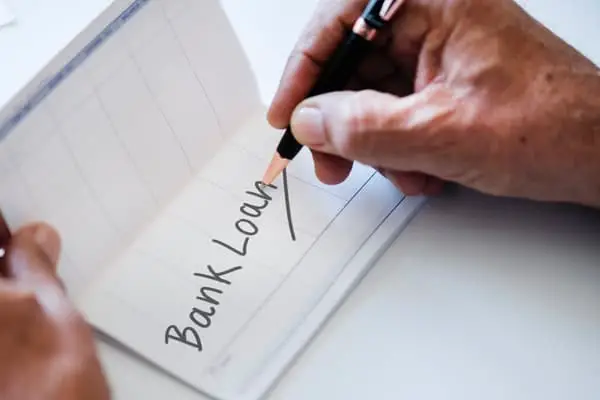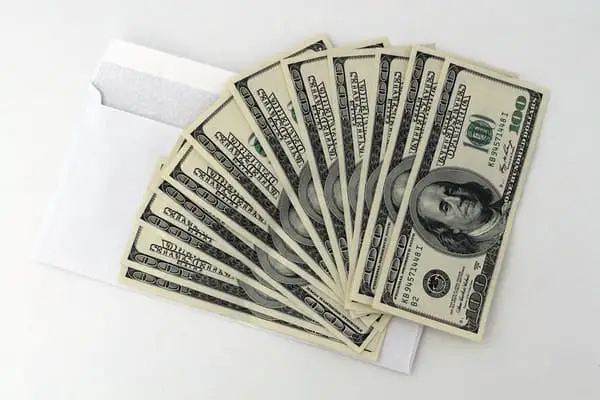Table of Contents
*This post may contain affiliate links. As an Amazon Associate we earn from qualifying purchases.

image by pexels
For those looking for ways to pay for college, a student loan may be necessary. With the rising costs of post-secondary education, more students are faced with the prospect of going into debt to get a college education. It is important for each student to consider their individual needs regarding student loans and, above all, remember that these are loans that must be repaid. In this article, we will review the Direct Stafford Loan program. We will take a closer look at the interest rates, repayment terms, and qualifying information so that you can make the most informed decision possible about financing your education.
What Is a Direct Stafford Loan?
The federal Direct Stafford loan program is a direct government loan program administered by the United States Department of Education. These loans come directly from the federal government and are not funded by a bank or an individual school. In order to apply for a Stafford loan, a prospective borrower must first complete the Free Application for Federal Student Aid, aka FAFSA.
Once the FAFSA has been completed, the Department of Education will generate a student aid report, in which several factors will be taken into account, that determines each student’s need for financial aid. Once this has been completed, each college’s financial aid department will then award the various financial aid that each student is eligible for, including student loans. Currently, the Direct Stafford loan is the only federal direct student loan available to undergraduate students.
It is a great commendation to the lender to lend to those who deserve well. -W. LEETON, attributed, Day’s Collacon
Typically, each college’s financial aid department will award the maximum loan amount that each student is eligible for. This amount is determined by the amount of financial need a student has minus any other sources of financial aid that student is being awarded. Financial need is determined by each college’s cost of attendance figure minus the student’s expected family contribution, or EFC. The EFC figure is determined by the Department of Education and is reported on each student’s Student Aid Report (SAR).
Once the loan amount has been offered, the student can accept it or request a reduced amount. However, each student can only accept up to the maximum amount and cannot request additional funds. Stafford loan limits vary according to year in college, filing status, and undergraduate or graduate school enrollment.
Loan Features

image by pexels
The Direct Stafford Loan program is a student loan program that is funded directly by the United States Department of Education. These loans are available for both graduate and undergraduate students at most colleges and post-secondary educational institutions. In order to qualify for a Direct Stafford Loan, a student must complete the FAFSA for the current academic year.
Students and their parents do not need a minimum credit score, nor do they need to demonstrate an ability to repay the loan in any way. In order to qualify, a student must have demonstrated financial need and be enrolled at least half time. These loans can be either subsidized or unsubsidized depending on their EFC, cost of attendance, and any other financial aid. Once a student has borrowed the maximum amount on a subsidized loan, any remaining loan eligibility would be dispersed as an unsubsidized loan.
Graduate school students are currently not eligible for a subsidized Direct Stafford Loan and can only borrow with an unsubsidized loan. Current yearly limits on a Direct Stafford Loan are $5,500 for freshman, $6,500 for sophomores, and $8,500 for juniors and seniors. The total cumulative limit on Direct Stafford Loans for undergraduate students is $57,000, which is the most amount of loan debt you will be allowed to accumulate.
For a graduate student, the yearly limit is $20,500 per year, and the cumulative loan limit is $138,000, which includes any loans taken out as an undergraduate student. As long as the borrower is enrolled in college at least half time, these loans are deferred.

image by pexels
Once you leave school or drop below half-time enrollment, any Direct Stafford Loan would enter a 6-month grace period during which time no payments are due. Once this grace period has expired, the loans will enter repayment. Currently, the standard repayment plan is a 10-year, or 120-month, term. However, borrowers with at least $30,000 in loan debt can opt for an extended repayment plan in which the loan would be repaid over a 25-year term. Also, the Direct Stafford Loan debt is eligible for a number of income-based repayment plans as long as certain criteria has been met.
With an income-based repayment plan, the monthly payment is determined by the borrower’s family size and adjusted gross income and must be recomputedon a yearly basis. It is important to keep in mind that under an income-based repayment plan, depending on what your monthly payment is, the loan balance may never be fully amortized which leaves borrowers with the prospect of having a loan payment for the rest of their lives or having their outstanding loan balance forgiven after 20 years in most cases.
Loan forgiveness under an income-based repayment plan must be counted as taxable income, so it is a good idea to consult with a tax professional to determine what your best strategy would be. Finally, Direct Stafford Loans are also eligible for the Public Service Loan Forgiveness program that offers loan forgiveness after 10 years of qualifying payments for borrowers that are employed in certain professions. This program offers tax-free loan forgiveness but only applies to certain borrowers and has rather strict qualifying guidelines.
Pricing
The Direct Stafford Loan program currently has an origination fee of approximately 1% of the total loan amount.
How It Compares

image by pexels
We picked a few similar products available on the market to see how they compare.
- Direct Consolidation Loans
- PLUS Loans
- Perkins Loans
Direct Stafford Loan
Price: $
The Direct Stafford Loan program currents assesses an origination fee of around 1% which is relatively low for unsecured debt.
Interest Rate: **** (4/5 stars)
Interest rates are relatively low on these loans with subsidized loans around 5% interest and unsubsidized loans around 6.5% interest. The interest rates vary year to year and are announcedprior to the academic year.
Loan Options: ***** (5/5 stars)
There are several loan options as borrowers may borrow any amount they wish up to the allowable limit. Also, several repayment plans are available, which makes managing student loan debt easier once you are in repayment.
Public Opinion: ** (2/5 stars)
Student loans, like the Direct Stafford Loan program, have received lots of bad publicity lately for what some believe to be predatory lending practices that allow young people to accumulate large amounts of debt without showing any ability to repay the debt.
Loan Terms: **** (4/5 stars)
Several repayment options are available, and deferment and forbearance options are available if the borrower has a financial hardship.
PROS
- No qualifying credit score
- Low cost, low interest
- Flexible repayment terms
CONS
- Students accumulate large amounts of debt before having the income necessary to pay it back
- Loan forgiveness, in most cases, results in a large tax bill
PLUS Loans
The PLUS loan program is a direct federal loan that can be taken out by a student or their parent in order to fully fund the student’s cost of attendance. The parent PLUS loan program is intended for the parents of undergraduate students. These loans have no limits, and parents can borrow up to the full cost of attendance amount.
In order to apply for a parent PLUS loan, the student must fill out the FAFSA and notify their college financial aid office of their parent’s wishes to take out a PLUS loan. The Parent PLUS loan is a loan that is in the parent’s name and cannot be transferred to the student at any time. Also, it cannot be consolidated with the student’s other federal student loan debt.
The other type of PLUS loan is a Grad PLUS loan. The Grad PLUS loan can be taken out by the student as long as they are a graduate-level student and have already taken out the maximum amount of eligible Direct Stafford Loans. The Grad PLUS loan may be consolidated with the borrower’s other federal student loan debt.
Price: $$$
Currently, the Direct PLUS loan program assesses an origination fee of about 4.2%, which is relatively high.
Interest Rate: *** (3/5 stars)
PLUS loans have higher interest rates than Stafford loans with the current rate being around 7.6%.
Loan Options: *** (3/5 stars)
Only parents can take out a PLUS loan for an undergraduate student, whereas the student themselves can take out a Grad PLUS Loan if they are in graduate school.
Public Opinion: ** (2/5 stars)
Student loans have a relatively unfavorable public opinion, currently,due to many highly publicized stories about excessive debts accumulated by students with no ability to repay these debts.
Loan Terms: **** (4/5 stars)
Several repayment terms are available, including the income-contingent option.
PROS
- No minimum qualifying credit score
- No aggregate loan limit
- Can borrow up to the full cost of attendance
CONS
- Higher interest rate than other federal student loans
- High origination fee
- Only eligible for income-contingent repayment plan which is more expensive than an income-based plan
Perkins Loans
The Perkins loan program is a federal student loan program for students that demonstrate considerable financial need. This is determined by the student’s college, and the loan funds are dispersed by the school itself. Perkins loans have several of the same features including similar repayment plans as the Direct Stafford Loan program and are eligible for consolidation with other federal student loan debt. Currently, interest rates are around 5% for these loans.
Price: $
The origination fee for a Perkins loan is right around 1%.
Interest Rate: **** (4/5 stars)
The interest rate on these loans is right around 5% and is very similar to the Stafford loan rate.
Loan Options: *** (3/5 stars)
These loans are relatively uncommon, and only students with high levels of financial need can qualify.
Public Opinion: ** (2/5 stars)
In general, public opinion of student loans is relatively low.
Loan Terms: **** (4/5 stars)
These loans are eligible for several repayment plans and can be consolidated with other student loan debt. These loans are also eligible for income-based repayment plans.
PROS
- Low origination fee
- Low interest rate
- Helps students with significant financial need finance their education
CONS
- Only certain borrowers will qualify
- This program will be phased out by the Department of Education soon
Conclusion
Student loans have gotten a lot of bad publicity recently, and many young Americans are saddled with high levels of debt. However, for many people, student loans make a college education possible. It is important to remember that this is only one source of funding for a college education and should be considered as part of a greater overall plan to finance college. Remember, these are loans that must be repaid, and students should only borrow what they need to pay for their education.
Overall rating for Direct Stafford Loans: **** (4/5 stars)

gif by giphy
